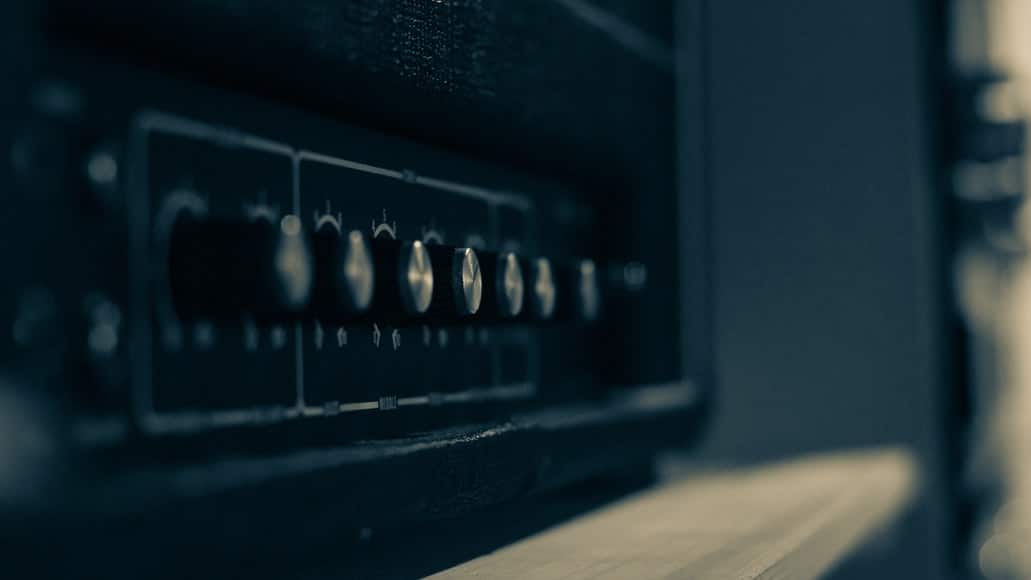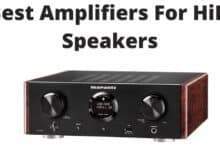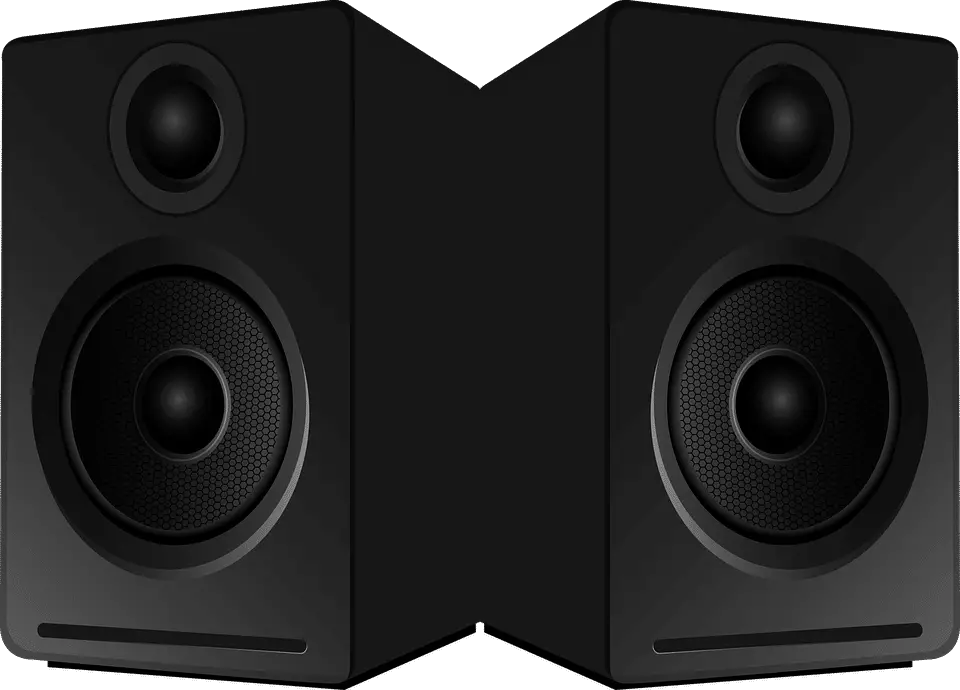For the uninitiated, amplifiers can seem like they’re all much of a muchness. After all, they’re usually an innocuous enough-looking metal box with a series of (delightfully tactile) knobs and switches, so what else is there to know, really?
Well, when it comes to matching that amplifier with your speakers, the answer is; quite a bit, actually.
In this article, we answer your question about How To Choose Amplifiers For Home Speakers The Perfect Way with Understanding Speaker And Amplifier Matching Terminology.
Though we spend countless hours scouring local HiFi suppliers and reading reviews to find the perfect speakers, often, our choice of amplifier is something of an afterthought.
This remains true even though amplifiers are almost as crucial to the tone and overall presentation of your audio as your speakers are.
Yes, though that innocuous metal box might look similar to other amplifiers in the showroom, it will produce a unique sound profile and, through its technical specifications, support some – but not all – of the speakers available to you.
As you can imagine then, amplifier and speaker matching are quite vital, but it’s not as simple as just matching spec numbers and hitting play – it’s about complete system compatibility.
By effectively ensuring speakers and amplifier synergy, you can ensure a fuller, richer sound that won’t blow your speakers and will deliver superior performance and quality – well worth doing if you’re spending good money on your setup.
Here on the internet, you’ll find dozens of extremely technical and maths-heavy explanations. But for most people, they’re simply too difficult to get an immediate grasp on – especially for a job you won’t be doing often.
Table of Contents
How To Choose Amplifiers For Home Speakers
One command rule of thumb when going for an amplifier, speaker pairing is to go for an amplifier that has almost two times the power rating of your speaker.
As such, this guide is going to be something of an essentials piece, giving you all the information you need without the complicated maths or advanced terminology like slew rate, dampening, or electromotive force, so you can get back to what matters – your music. So, for your devoted audiophiles, let that serve as a warning!
Understanding Speaker And Amplifier Matching Terminology
The key to ensuring effective synergy between your speakers and your amplifier is having a basic grasp of HiFi vocabulary.
We’re talking about the essential terms used in speaker and amplifier specifications which will prove critical to your search for awesome, long-term HiFi sound.
The three terms we’ll be tackling in this article are impedance, power, and sensitivity. We’ll kick things off with ‘impedance’
‘Impedance’
You’ll find impedance on the spec sheets for both specs and amplifiers, but what is it? Put simply, it can be thought of as a measure of the electrical resistance of your components, measured in ohms.
Resistance will often be represented by the Ω symbol, like 10Ω. For those with experience in electronics, you’ll understand precisely what resistance is, but for our (somewhat simplified) purposes it’s not vital to have in-depth knowledge.
We’ll be using impedance to determine the compatibility between your amplifier and speakers.
Speakers, for their part, typically have ohm ratings of between 4 and 8. Amplifiers usually operate best and are rated within a specified range, like between 6 and 12 ohms.
By checking the specs of your amp and speakers, you can find out whether they’re compatible. This information is easily found on any spec sheet if you’ve bought your products, or available online if you’ve misplaced your original documentation.
The lower the impedance, the louder the sound. However, I’d you’re going for a more quality sound it is advised to go for speakers with higher impedance. They provide clearer bass and less sound distortion.
The Bottom Line:
Our general advice would be that it’s fine to connect speakers with a higher impedance to an amplifier capable of operating with a lower impedance, but what you shouldn’t do is connect speakers with a lower impedance (say, 4 ohms) to an amplifier with a higher minimum impendence (10 ohms, for example).
Almost all of the time, that’ll ensure a safe speaker and amplifier pairing, and it takes out most of the complicated maths.
As an aside, you’ll find that many modern speakers and amplifiers have also moved towards ‘compatible with’ ohm ratings, which greatly simplifies things for everyone.
‘Power’
So, let’s turn our attention to power, but beware – things are about to get a little confusing.

Just like any electrical item, power in HiFi and home cinema equipment is measured in watts. Often, this leads people to make the mistake of believing that more wattage means greater volume output, but that’s not always the case.
Wattage in speakers and amplifiers is about how much power a speaker can handle and how much power an amplifier is putting out. In the past, people would often combine a low-watt amplifier with high-watt speakers and call it a day.
However, that’s not the path to the best match. To get there, we’re going to have to wade through some HiFi jargon weeds.
Amplifier spec sheets will often reference Continuous Power (occasionally referenced as Continuous Power Output or Continuous RMS power) and Dynamic (or Peak) Power.
For our purposes, we’re going to pay closer attention to Continuous Power, because it indicates how powerful an amplifier is in normal operation.
Put simply, Continuous Power delivers a fixed wattage to a fixed number of ohms, like 50 watts per channel into 4 and 8 ohms.
However, Dynamic Power could push 100 watts into 8 ohms and 150 watts into 4 ohms. That’s because Dynamic Power is designed to ensure that the wide dynamics demanded by modern digital music and movie formats are properly powered at the moment. However, this power is only utilized for milliseconds, making it an unreliable indicator for general amplifier power.
In regards to speakers, many manufacturers have their own way of displaying recommended amplification (wattage) levels. recommended amplification on a pair of speakers is between 25 and 150w.
However, other manufacturers may provide you with Minimum Recommended Power, Maximum Continuous Power, and Maximum Short-Term Peak Power ratings for your speakers.
The Bottom Line:
Pay attention to Continuous Power and the wattage your amplifier is putting out, and stack that up against the recommended amplification levels on your speaker. By comparing these two figures, you’ll be able to gauge the suitability of your pairing.
‘Sensitivity’
This one’s just for speakers, and rather than wattage, sensitivity is the measure of how loud a speaker will be in decibels when 1 meter away and being driven by 1 watt of power.

So, why should you care about sensitivity? Well, it’s directly linked to how loud your speakers can get. When the distance from the speaker and power applied is the same, a speaker with a lower sensitivity would sound quieter than a speaker with higher sensitivity.
That doesn’t mean higher sensitivity is better, it simply means that a higher sensitivity speaker will reach higher volumes, and potentially save you from investing in a more powerful amplifier.
Wondering why amplifiers offer way more than 1 watt of power if that’s all it takes to reach 92dB from one meter away with a set of speakers like the 2050is? Well, that’s because amplifier power output has to double to increase a speaker’s sound pressure level by 3dB.
So, with our example above, it would take 2 watts for the 2050i’s to hit 95dB, 4 watts to hit 98dB, 8 watts to hit 102dB, 16 watts to reach 105dB, and so on until your eardrums can’t handle it anymore.
If you increase the distance between you and your speakers, the volume drops off quickly. You can expect to see a 6dB fall off every time you double the distance between your speakers.
For example, if you were sitting 4 meters from your speakers, you’d lose 18dB of volume, which in turn would require a much more powerful amplifier to return to your desired volume level.
The Bottom Line:
It’s crucial to ensure your speakers have a high enough sensitivity that your amplifier can effectively drive them. Take a look at the listed sensitivity on your speakers and perform the basic maths above, and you’ll get an indication of whether they’re destined for each other.
Learning Our Lessons And Matching Our Systems
That’s a lot to take in – we get it, but unfortunately there’s simply no quick shortcut to getting the right system match. By taking in the lessons we learned above regarding impedance, power, and sensitivity, we can pair a set of speakers with an amplifier for an effective party, but there’s even more to consider.

You need to think carefully about how you’re going to use your speakers, where you’re going to position them, and for what purpose they’re going to serve. For example, a HiFi system in a lounge is going to have different requirements than a home cinema set up.
Larger rooms require larger speakers with higher sensitivity or more powerful amplifiers than you might have previously considered, whilst intimate spaces can effectively be scaled back in terms of sensitivity or power.
There’s an excellent SPL calculator available here, which will help you work out your sound pressure levels, taking into account a wide variety of variables.
However, you don’t need a calculator to realize that if it takes 200 watts of power to get your speakers to 85db from 3 meters away, but your chosen speakers can’t handle more than 100 watts of Continuous Power, your system simply isn’t going to work properly.
You’ll also need to keep in mind that impedance is going to play a vital role in your speaker and amplifier matching. It’s not as hard as it used to be, but you need to check whether your speaker impedance and power handling are compatible with the imprudence range of your amp and output power it can deliver safely.
If in doubt, revisit our ‘impedance’ section above. All of this sounds needlessly complicated, but trust us when we say it isn’t, really.
We’ve used a lot of words to describe how to match your system, but ultimately, it’s a handful of factors that can easily be checked and some maths which can be completed with an online calculator.
All images were gotten from acoustics.co.uk




